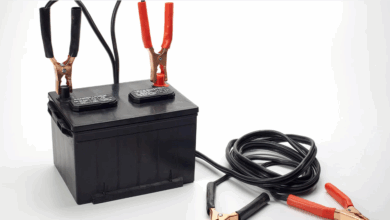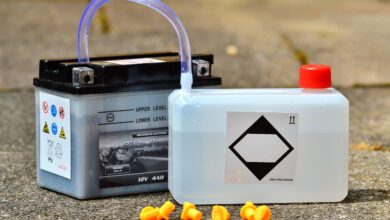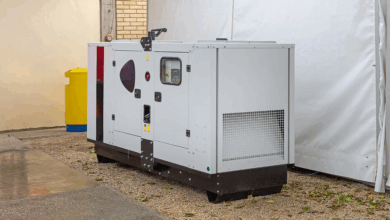5000 Watts: Is It Enough for Your Needs?

5000 Watts: Is It Enough for Your Needs?
In a world increasingly reliant on electricity, understanding power requirements is crucial, whether you’re planning for a power outage, embarking on an RV adventure, setting up an off-grid cabin, or simply needing backup power for essential appliances. A common power output figure that often comes up is 5000 watts. But what exactly does 5000 watts represent in practical terms, and is it truly enough to meet your specific needs?
This article will break down what 5000 watts can typically handle, discuss the factors you need to consider when calculating your own power demands, and help you determine if a 5000-watt power source is the right fit.
What Exactly is 5000 Watts? Understanding the Basics
Watts (W) are a measure of power – the rate at which energy is used or produced. Think of it like the speed of energy flow. Volts (V) are the "pressure" of electricity, and Amps (A) are the volume of current flowing. The relationship is simple: Watts = Volts x Amps.
A 5000-watt power source (like a generator, inverter, or power station) can produce up to 5000 watts of power at any given moment. However, there’s a critical distinction when dealing with appliances and power sources:
- Running Watts (or Rated Watts): This is the continuous power an appliance needs to operate after it’s started.
- Starting Watts (or Surge Watts): Many appliances, especially those with electric motors (like refrigerators, air conditioners, pumps, and power tools), require a brief surge of extra power to get going. This surge can be significantly higher than their running wattage.
A 5000-watt generator or inverter will typically have both a running wattage rating and a starting wattage rating. The 5000W usually refers to the starting or peak wattage it can handle for a very short period. Its running wattage capacity might be slightly lower, perhaps around 4000-4500 watts. For the purposes of this article, we’ll generally assume 5000W refers to a system capable of delivering at least 4000-4500 running watts with a 5000W surge capacity, as this is typical for units advertised at this level.
Common Applications for 5000 Watts
A power source capable of delivering 5000 watts offers a decent amount of versatility. Here are some common scenarios where this level of power is often considered:
- Partial Home Backup: During a power outage, 5000 watts can power essential circuits in a home, such as lights, a refrigerator/freezer, a few electronics (TV, computers, phone chargers), a microwave, and potentially a sump pump or furnace fan. It’s unlikely to power central air conditioning or multiple large appliances simultaneously.
- RV Power: Many medium to large RVs can be comfortably powered by a 5000-watt generator or inverter, running appliances like the air conditioner (usually one unit), microwave, lights, and outlets.
- Camping and Outdoor Events: Powering lights, speakers, coffee makers, electric grills, and charging devices at a campsite or outdoor gathering.
- Small Job Sites: Running a few essential power tools like circular saws, drills, compressors (check specific tool requirements), and work lights.
- Small Off-Grid Systems: Providing power for a tiny home or cabin running basic appliances.
What Can 5000 Watts Actually Power? Examples:
To get a better sense of 5000 watts, let’s look at the typical power draw of common appliances (these are estimates and can vary based on the specific model and efficiency):
- Kitchen Appliances:
- Refrigerator: 100-200 W (running), 700-1200 W (starting)
- Freezer: 100-200 W (running), 800-1500 W (starting)
- Microwave: 600-1500 W
- Coffee Maker: 800-1500 W
- Toaster: 800-1500 W
- Blender: 300-800 W
- HVAC & Water:
- Furnace Fan (gas furnace): 300-600 W (running), 800-1500 W (starting)
- Window Air Conditioner (10,000 BTU): 800-1200 W (running), 1500-2500 W (starting)
- Sump Pump: 750-1500 W (starting), 300-750 W (running)
- Water Pump (well pump): 1000-2000 W (running), 2000-4000+ W (starting)
- Electronics & Entertainment:
- TV: 50-300 W
- Laptop Charger: 50-100 W
- Phone Charger: 5-20 W
- Lights (LED): 5-20 W per bulb
- Lights (Incandescent): 60-100 W per bulb
- Gaming Console: 100-200 W
- Tools:
- Circular Saw: 800-1500 W (running), 1500-2500+ W (starting)
- Drill: 300-800 W
- Air Compressor (small): 800-1500 W (running), 1500-3000+ W (starting)
With 5000 watts peak capacity and perhaps 4000-4500 running watts, you could potentially run:
- A refrigerator, several lights, a TV, and charge phones/laptops simultaneously.
- Or a window AC unit, a microwave, and a few small electronics.
- Or a sump pump, a furnace fan, and essential lights.
- Or one or two power tools for a job.
The key limitation is the simultaneous use of multiple high-wattage appliances. For example, running a window AC and starting a refrigerator at the same time might exceed the 5000W surge capacity.
Factors Determining Your Actual Needs
Deciding if 5000 watts is enough requires you to look closely at your specific situation:
- What Exactly Do You Need to Power? Make a list of all the appliances, tools, or devices you might need to run using this power source.
- How Many Things Will You Run Simultaneously? This is the most critical question. During a power outage, will you need the fridge, freezer, furnace fan, and a few lights all on at once? While camping, will you run the AC and the microwave simultaneously?
- Starting vs. Running Watts: For each item on your list, find both its running and starting wattage (often listed on a label on the appliance or in the manual). Motorized appliances are the main culprits for high starting watts.
- Purpose (Backup, Primary, Recreational): Are you using this as a temporary backup for essentials, a primary power source for an off-grid setup, or for occasional recreational use? The duration and consistency of power needed will influence your choice.
- Efficiency of Appliances: Newer, energy-efficient appliances (especially those with inverter technology) tend to have lower running and starting watts.
- Future Needs: Do you anticipate adding more power-hungry appliances or tools in the future?
Calculating Your Power Requirements
Here’s a simplified method to estimate your power needs:
- List Appliances: Write down everything you might want to power simultaneously.
- Find Watts: For each item, list its running watts and starting watts.
- Calculate Running Total: Add up the running watts of all the items you want to run at the same time.
- Identify Highest Starting Watt: Look at the list of items that might start while other things are already running. Find the single appliance among these with the highest starting wattage.
- Total Estimated Need: Add the total running watts (from step 3) to the highest single starting wattage (from step 4).
Example: You want to run a refrigerator (150W running / 1000W starting), a furnace fan (400W running / 1200W starting), 5 LED lights (10W each = 50W total running), and a TV (150W running).
- Simultaneous running total: 150W (fridge) + 400W (furnace) + 50W (lights) + 150W (TV) = 750 Running Watts.
- Highest potential starting watt while others are running: Either the fridge (1000W) or the furnace fan (1200W). The highest is 1200W.
- Total Estimated Need: 750 Running Watts + 1200 Starting Watts = 1950 Watts.
Important Note: This calculation is a simplified model. You should also add a safety margin (e.g., 10-20%) to your total estimated need to avoid overloading the power source. In the example above, 1950W + 10% = ~2145W. A 5000W peak / 4000-4500W running unit would be more than sufficient for this scenario.
However, if you wanted to add a window AC (1000W running / 2000W starting) to that list and potentially run it simultaneously with the fridge and furnace fan:
- Simultaneous running total: 150W (fridge) + 400W (furnace) + 50W (lights) + 150W (TV) + 1000W (AC) = 1750 Running Watts.
- Highest potential starting watt: The AC is now the highest at 2000W.
- Total Estimated Need: 1750 Running Watts + 2000 Starting Watts = 3750 Watts.
Adding a safety margin (10%) brings it to 4125W. A 5000W peak / 4000-4500W running unit would still likely handle this, but you’re getting closer to its continuous capacity, especially if other items with lower starting watts (like a microwave or coffee maker) might also kick on.
Is 5000 Watts Enough for You?
Based on the typical uses and calculations:
-
5000 Watts is LIKELY Enough For:
- Powering essential appliances during a short home power outage (fridge, lights, some electronics, furnace fan, maybe a sump pump).
- Running a medium to large RV, including one air conditioning unit.
- Recreational activities requiring moderate power draw.
- Light-duty job site power for basic tools.
- You LIKELY Need MORE Than 5000 Watts For:
- Powering an entire house, including central air conditioning or electric heat.
- Running multiple large appliances (e.g., central AC, electric stove, electric dryer) simultaneously.
- Heavy-duty job sites with multiple high-draw tools running constantly.
- Large off-grid homes with significant power demands.
FAQs
- Q: Can 5000 watts power a whole house?
- A: Generally, no. While it can power essential circuits, it’s insufficient for the total power needs of most modern homes, especially if you want to run central air conditioning, electric heat, or multiple large appliances at once.
- Q: Can 5000 watts run an air conditioner?
- A: It can typically run a window air conditioner (check the AC unit’s wattage). It is usually not enough to start and run a central air conditioning system, which often requires 3000-5000 running watts and significantly higher starting watts.
- Q: Is a 5000-watt generator portable?
- A: 5000-watt generators are often considered portable, but they are quite heavy (typically 100-200+ pounds) and usually have wheels and handles. They are not something you’d easily carry long distances.
- Q: How long will a 5000-watt generator run on a tank of fuel?
- Q: Is 5000 watts peak or continuous power?
- A: When a unit is advertised as "5000 watts," this often refers to its peak or surge wattage capacity. The continuous or running wattage capacity is typically slightly lower, often around 4000-4500 watts. Always check both ratings.
Conclusion
5000 watts represents a substantial amount of power, capable of handling a wide range of applications from providing essential home backup to powering an RV or running tools on a job site. It offers a good balance of capability and relative portability (for generators) or system size (for inverters/batteries).
However, it is not a magic number that will power everything. The critical factor is understanding your specific needs – which appliances are essential, how many you need to run simultaneously, and their individual running and starting wattage requirements.
By taking the time to list your potential loads and performing a simple wattage calculation, you can determine if 5000 watts is a perfect fit, overkill, or if you need to step up to a larger power source. Plan ahead, calculate carefully, and choose the power solution that truly meets your needs.




![How to Bypass CO Sensor on Generator – [4-Step Safety Guide]](https://www.generator411.com/wp-content/uploads/2025/08/co-sensor-on-generator-390x220.png)